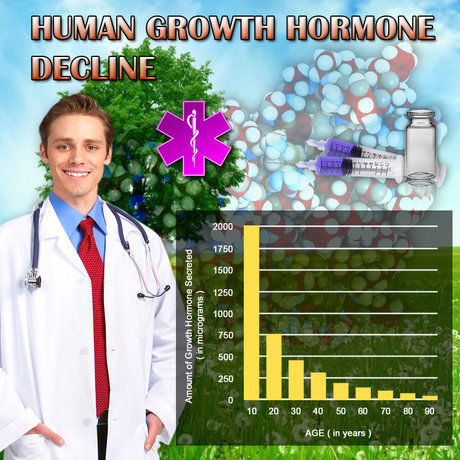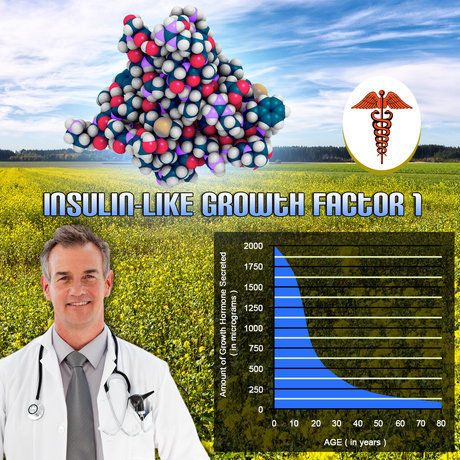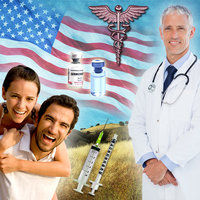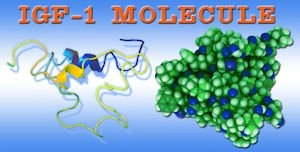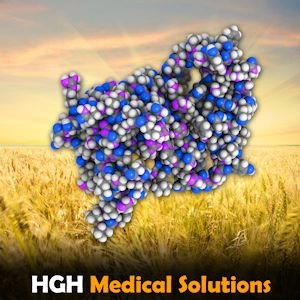Introduction to Shin Splints
Shin splints, medically known as medial tibial stress syndrome, are a common injury among American male runners. Characterized by pain along the inner edge of the shinbone (tibia), this condition can significantly hinder athletic performance and quality of life. The prevalence of shin splints among male runners underscores the importance of preventive measures, which sports medicine plays a crucial role in addressing.
Understanding the Causes
The etiology of shin splints is multifaceted, involving biomechanical, anatomical, and training-related factors. For American male runners, overpronation, improper footwear, and sudden increases in training intensity are frequent culprits. Sports medicine professionals emphasize the need for a comprehensive understanding of these causes to develop effective prevention strategies.
The Role of Sports Medicine
Sports medicine encompasses a broad range of disciplines, including orthopedics, physical therapy, and biomechanics, all of which contribute to the prevention of shin splints. By integrating knowledge from these fields, sports medicine specialists can offer tailored interventions that address the unique needs of male runners.
Biomechanical Assessments
One of the primary tools in the sports medicine arsenal is biomechanical assessment. Through gait analysis and other diagnostic techniques, specialists can identify abnormal running patterns that may predispose individuals to shin splints. For American male runners, correcting these biomechanical issues through customized orthotics or targeted exercises can significantly reduce the risk of injury.
Training Modifications
Sports medicine professionals also advocate for modifications in training regimens to prevent shin splints. Gradual increases in training volume and intensity, coupled with adequate rest periods, are essential. For male runners, incorporating cross-training activities that strengthen the muscles surrounding the shin can further enhance resilience against this injury.
Footwear and Equipment
The role of appropriate footwear cannot be overstated in the prevention of shin splints. Sports medicine experts recommend that American male runners invest in shoes that provide adequate support and cushioning. Additionally, the use of compression socks or sleeves may help reduce muscle fatigue and improve circulation, further mitigating the risk of developing shin splints.
Nutritional and Hydration Strategies
Nutrition and hydration play a pivotal role in overall athletic health and injury prevention. Sports medicine specialists advise male runners to maintain a balanced diet rich in vitamins and minerals that support bone health, such as calcium and vitamin D. Adequate hydration is also crucial, as dehydration can exacerbate muscle fatigue and increase susceptibility to injuries like shin splints.
Rehabilitation and Recovery
In the event that shin splints do occur, sports medicine offers effective rehabilitation strategies. Physical therapy, including stretching and strengthening exercises, can expedite recovery and prevent recurrence. For American male runners, early intervention and adherence to rehabilitation protocols are key to returning to peak performance.
Education and Awareness
Finally, sports medicine professionals emphasize the importance of education and awareness in preventing shin splints. By educating male runners about the risk factors and preventive measures, sports medicine can empower individuals to take proactive steps towards maintaining their health. Community outreach programs and workshops can further enhance this educational effort.
Conclusion
The role of sports medicine in preventing shin splints among American male runners is multifaceted and indispensable. Through biomechanical assessments, training modifications, appropriate footwear, nutritional strategies, and comprehensive rehabilitation, sports medicine professionals can significantly reduce the incidence of this common injury. By fostering a culture of education and awareness, sports medicine not only enhances the athletic performance of male runners but also contributes to their overall well-being.
Contact Us For A Fast And Professional Response

- Preventing Ankle Injuries in Volleyball: Sports Medicine and Technology Solutions [Last Updated On: March 3rd, 2025] [Originally Added On: March 3rd, 2025]
- Hamstring Injuries in Sprinters: Treatment, Rehabilitation, and Prevention Strategies [Last Updated On: March 17th, 2025] [Originally Added On: March 17th, 2025]
- Snowboarding Wrist Injuries: Prevention, Treatment, and Rehabilitation Strategies for American Males [Last Updated On: March 18th, 2025] [Originally Added On: March 18th, 2025]
- Optimizing Recovery for American Male Martial Artists: A Holistic Sports Medicine Approach [Last Updated On: March 19th, 2025] [Originally Added On: March 19th, 2025]
- Sports Medicine: Enhancing Performance and Longevity in American Male Water Polo Players [Last Updated On: March 19th, 2025] [Originally Added On: March 19th, 2025]
- Sports Medicine's Crucial Role in Preventing Overuse Injuries in American Male Climbers [Last Updated On: March 19th, 2025] [Originally Added On: March 19th, 2025]
- Sports Medicine's Vital Role in Enhancing Triathlete Performance and Health [Last Updated On: March 20th, 2025] [Originally Added On: March 20th, 2025]
- Surfing Injuries in American Males: Prevalence, Prevention, and Sports Medicine Advances [Last Updated On: March 20th, 2025] [Originally Added On: March 20th, 2025]
- Sports Medicine Revolutionizes CrossFit: Enhancing Safety and Performance for American Males [Last Updated On: March 21st, 2025] [Originally Added On: March 21st, 2025]
- Preventing Shoulder Injuries in Lacrosse Goalies: A Comprehensive Sports Medicine Approach [Last Updated On: March 21st, 2025] [Originally Added On: March 21st, 2025]
- Sports Medicine Innovations Aid American Male Rowers with Lower Back Pain Management [Last Updated On: March 21st, 2025] [Originally Added On: March 21st, 2025]
- Sports Medicine: Enhancing Health and Performance in American Male Figure Skating [Last Updated On: March 21st, 2025] [Originally Added On: March 21st, 2025]
- Sports Medicine: Enhancing Performance and Longevity for American Male Table Tennis Players [Last Updated On: March 21st, 2025] [Originally Added On: March 21st, 2025]
- Beach Volleyball Ankle Injuries: Prevention, Training, and Rehabilitation Strategies [Last Updated On: March 22nd, 2025] [Originally Added On: March 22nd, 2025]
- Sports Medicine Enhances Performance and Longevity in American Male Polo Players [Last Updated On: March 22nd, 2025] [Originally Added On: March 22nd, 2025]
- BMX Challenges and Recovery: The Vital Role of Sports Medicine for American Males [Last Updated On: March 23rd, 2025] [Originally Added On: March 23rd, 2025]
- Sports Medicine's Impact on Injury Management in American Male Field Hockey Players [Last Updated On: March 23rd, 2025] [Originally Added On: March 23rd, 2025]
- Ankle Health Strategies for American Male Basketball Point Guards: Prevention to Rehabilitation [Last Updated On: March 23rd, 2025] [Originally Added On: March 23rd, 2025]
- Sports Medicine's Vital Role in Enhancing Soccer Defenders' Recovery and Performance [Last Updated On: March 23rd, 2025] [Originally Added On: March 23rd, 2025]
- Sports Medicine Revolutionizes Recovery for American Male Ice Hockey Players [Last Updated On: March 23rd, 2025] [Originally Added On: March 23rd, 2025]
- Ultimate Frisbee: Knee Health Strategies for American Male Athletes [Last Updated On: March 24th, 2025] [Originally Added On: March 24th, 2025]
- Sports Medicine's Role in Enhancing American Male Fencers' Performance and Longevity [Last Updated On: March 24th, 2025] [Originally Added On: March 24th, 2025]
- Sports Medicine Advances Aid Hip Recovery in American Male Track Cyclists [Last Updated On: March 24th, 2025] [Originally Added On: March 24th, 2025]
- Hamstring Injury Prevention Strategies for American Male Soccer Midfielders [Last Updated On: March 24th, 2025] [Originally Added On: March 24th, 2025]
- Rotator Cuff Injuries in American Male Swimmers: Diagnosis, Treatment, and Prevention [Last Updated On: March 24th, 2025] [Originally Added On: March 24th, 2025]
- Optimizing Recovery for American Football Wide Receivers: A Sports Medicine Approach [Last Updated On: March 24th, 2025] [Originally Added On: March 24th, 2025]
- Sports Medicine's Role in Enhancing American Male Swimmers' Health and Performance [Last Updated On: March 24th, 2025] [Originally Added On: March 24th, 2025]
- Sports Medicine Enhances Career Longevity for American Male Badminton Players [Last Updated On: March 24th, 2025] [Originally Added On: March 24th, 2025]
- Sports Medicine Revolutionizes Training for American Male Cyclists [Last Updated On: March 25th, 2025] [Originally Added On: March 25th, 2025]
- Sports Medicine Enhances Safety and Performance in American Male Trampoline Gymnastics [Last Updated On: March 25th, 2025] [Originally Added On: March 25th, 2025]
- Managing Groin Injuries in American Male Hockey Players: Strategies and Prevention [Last Updated On: March 25th, 2025] [Originally Added On: March 25th, 2025]
- Sports Medicine Revolutionizes Career Longevity for American Male Baseball Pitchers [Last Updated On: March 26th, 2025] [Originally Added On: March 26th, 2025]
- Sports Medicine Revolutionizes Training and Health for American Male Handball Athletes [Last Updated On: March 26th, 2025] [Originally Added On: March 26th, 2025]
- Sports Medicine Advances Aid Lacrosse Attackmen with Shoulder Injury Prevention and Treatment [Last Updated On: March 26th, 2025] [Originally Added On: March 26th, 2025]
- Cross-Country Skiing: Knee Health Strategies for American Male Skiers [Last Updated On: March 26th, 2025] [Originally Added On: March 26th, 2025]
- Sports Medicine's Role in Preventing Stress Fractures in American Male Runners [Last Updated On: March 26th, 2025] [Originally Added On: March 26th, 2025]
- Optimizing Recovery for American Male Soccer Goalkeepers: A Holistic Approach [Last Updated On: March 26th, 2025] [Originally Added On: March 26th, 2025]
- Preventing Achilles Tendon Injuries in American Male Runners: Sports Medicine Strategies [Last Updated On: March 26th, 2025] [Originally Added On: March 26th, 2025]
- Tendonitis in American Male Tennis Players: Sports Medicine Treatment and Prevention Strategies [Last Updated On: March 26th, 2025] [Originally Added On: March 26th, 2025]
- Lacrosse Midfielders' Hip Health: Sports Medicine Innovations and Rehabilitation Strategies [Last Updated On: March 26th, 2025] [Originally Added On: March 26th, 2025]
- Preventing Back Injuries in American Male Rowers: A Holistic Sports Medicine Approach [Last Updated On: March 27th, 2025] [Originally Added On: March 27th, 2025]
- Speed Skating Muscle Health: Strategies and Innovations for American Male Athletes [Last Updated On: March 27th, 2025] [Originally Added On: March 27th, 2025]
- Sports Medicine Revolutionizes Performance in American Male Volleyball [Last Updated On: March 27th, 2025] [Originally Added On: March 27th, 2025]
- Rugby Sevens' Rise in U.S. and Vital Role of Sports Medicine for Male Athletes [Last Updated On: March 27th, 2025] [Originally Added On: March 27th, 2025]
- Sports Medicine: Enhancing Performance and Health in American Male Track and Field Athletes [Last Updated On: March 28th, 2025] [Originally Added On: March 28th, 2025]
- Sports Medicine: Essential for American Male Rugby Forwards' Health and Performance [Last Updated On: March 28th, 2025] [Originally Added On: March 28th, 2025]
- Sports Medicine Boosts Career Longevity for American Male Baseball Outfielders [Last Updated On: March 29th, 2025] [Originally Added On: March 29th, 2025]
- Sports Medicine's Role in Managing Injuries for American Male Swimmers [Last Updated On: March 29th, 2025] [Originally Added On: March 29th, 2025]
- Knee Health Management for Football Running Backs: Prevention, Treatment, and Rehabilitation [Last Updated On: March 29th, 2025] [Originally Added On: March 29th, 2025]
- Optimizing Recovery for American Male Soccer Forwards: A Comprehensive Approach [Last Updated On: March 29th, 2025] [Originally Added On: March 29th, 2025]
- Sports Medicine: Enhancing Performance and Health in Basketball Forwards [Last Updated On: March 30th, 2025] [Originally Added On: March 30th, 2025]
- Sports Medicine's Role in Enhancing American Male Volleyball Players' Performance and Health [Last Updated On: April 1st, 2025] [Originally Added On: April 1st, 2025]
- Sports Medicine Revolutionizes Performance and Health for American Male Cyclists [Last Updated On: April 1st, 2025] [Originally Added On: April 1st, 2025]
- Sports Medicine Revolutionizes Performance and Health in Male Track and Field Athletes [Last Updated On: April 4th, 2025] [Originally Added On: April 4th, 2025]
- Cross-Country Skiing and Knee Health: Insights for American Male Skiers [Last Updated On: April 5th, 2025] [Originally Added On: April 5th, 2025]
- Sports Medicine: Enhancing Health and Performance for Basketball Forwards [Last Updated On: April 6th, 2025] [Originally Added On: April 6th, 2025]
- Lacrosse Midfielders' Hip Injuries: Sports Medicine's Role in Treatment and Prevention [Last Updated On: April 6th, 2025] [Originally Added On: April 6th, 2025]
- Preventing Achilles Tendon Injuries in American Male Runners: A Sports Medicine Approach [Last Updated On: April 8th, 2025] [Originally Added On: April 8th, 2025]
- Managing Groin Injuries in American Male Hockey: Diagnosis, Treatment, and Prevention Strategies [Last Updated On: April 8th, 2025] [Originally Added On: April 8th, 2025]
- Preventing Hamstring Injuries in American Male Soccer Midfielders: A Comprehensive Guide [Last Updated On: April 9th, 2025] [Originally Added On: April 9th, 2025]
- Sports Medicine: Enhancing Health and Performance in American Male Rugby Forwards [Last Updated On: April 10th, 2025] [Originally Added On: April 10th, 2025]
- Sports Medicine: Extending Careers of American Male Baseball Outfielders [Last Updated On: April 10th, 2025] [Originally Added On: April 10th, 2025]
- Knee Health Strategies for American Football Running Backs: Prevention and Recovery [Last Updated On: April 11th, 2025] [Originally Added On: April 11th, 2025]
- Sports Medicine: Enhancing Performance and Health in American Male Track Athletes [Last Updated On: April 11th, 2025] [Originally Added On: April 11th, 2025]
- Optimizing Recovery for American Male Soccer Forwards: A Comprehensive Guide [Last Updated On: April 12th, 2025] [Originally Added On: April 12th, 2025]
- Sports Medicine Revolutionizes Performance and Health in American Male Cycling [Last Updated On: April 12th, 2025] [Originally Added On: April 12th, 2025]
- Sports Medicine's Role in Enhancing American Male Swimmers' Performance and Health [Last Updated On: April 13th, 2025] [Originally Added On: April 13th, 2025]
- Sports Medicine Revolutionizes Hip Injury Management in American Male Lacrosse Midfielders [Last Updated On: April 16th, 2025] [Originally Added On: April 16th, 2025]
- Sports Medicine's Vital Role for American Male Rugby Forwards' Health and Performance [Last Updated On: April 16th, 2025] [Originally Added On: April 16th, 2025]
- Sports Medicine's Vital Role in Enhancing Volleyball Performance and Career Longevity [Last Updated On: April 17th, 2025] [Originally Added On: April 17th, 2025]
- Managing Groin Injuries in Hockey: Diagnosis, Treatment, and Prevention Strategies [Last Updated On: April 18th, 2025] [Originally Added On: April 18th, 2025]
- Sports Medicine's Role in Preventing Achilles Tendon Injuries in American Male Runners [Last Updated On: April 18th, 2025] [Originally Added On: April 18th, 2025]
- Sports Medicine's Role in Protecting Football Running Backs' Knee Health [Last Updated On: April 19th, 2025] [Originally Added On: April 19th, 2025]
- Preventing Hamstring Injuries in Soccer: A Holistic Sports Medicine Approach [Last Updated On: April 19th, 2025] [Originally Added On: April 19th, 2025]
- Knee Health Strategies for American Male Cross-Country Skiers [Last Updated On: April 19th, 2025] [Originally Added On: April 19th, 2025]
- Sports Medicine: Enhancing Performance and Career Longevity for Basketball Forwards [Last Updated On: April 20th, 2025] [Originally Added On: April 20th, 2025]

